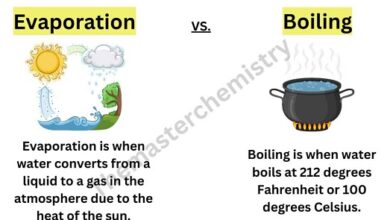What is General Systems Theory Origin concepts characteristics
General systems theory, or just systems theory, is the interdisciplinary study of different systems in general, with the aim of discovering patterns and identifying rules that can be applied in different fields of knowledge.
The theory adopts that a system is any organism formed by interconnected and interdependent parts . It is this breadth of the concept that makes the general systems theory applicable to different areas of knowledge, whether in the exact, social, natural sciences, etc.
The purpose of systems theory is to investigate commonalities between different fields of knowledge and discover their dynamics, problems and principles (purpose, methods, tools, etc.), in order to produce results.
Systems theory represents some shifts in perspective in a few respects:
- From the parts to the whole. Through systems theory, the focus is no longer the object of study of each area, but rather the relationships between these different areas.
- From measuring to mapping these relationships
- From quantitative analysis to qualitative data analysis
- From objective knowledge to epistemological knowledge, i.e. “knowledge about knowledge”
Origin of general systems theory
Systems theory originated in the branch of biology with the studies of Ludwig von Bertalanffy , in the 60s. The metaphors used by Ludwig to refer to living organisms were soon adopted by scholars in the organizational area in an attempt to better understand the functioning of organizations.
In 1966, psychologist Daniel Katz and computer scientist Robert Kahn published the book “Social Psychology of Organizations”, thus popularizing the application of Systemic Theory in the field of organizations. Later, the theory began to be applied in a similar way in several areas of knowledge.
Important concepts of general systems theory
The general systems theory presents some concepts that are essential for its understanding:
System : organism composed of independent and interconnected parts.
Boundaries : boundaries that define a system and separate it from others.
Entropy : quantity that measures the level of irreversibility of changes suffered by a physical system.
Homeostasis or “ steady state ”: resistance to changes by a system with a tendency to remain in equilibrium.
Environment : external context in which the system is located.
Input , import or input : phenomenon or cause that initiates the functioning of the system.
Output , export or output : final consequence of the functioning of the system. The results must be consistent with the purpose of the system.
Processing or throughput : process of converting imports into exports.
Feedback or feedback : the system’s reaction to external stimuli. It can be positive or negative. Positive feedbacks make the system act according to the received input while negative feedbacks force the system to act in the opposite way (resistant).
System characteristics
According to Bertanlanffy, despite being made up of several independent parts, systems have unique characteristics and attributes that do not exist in any of the isolated parts that compose them. These features are:
Purpose : systems always aim to serve a purpose that cannot be satisfied by any of its isolated parts.
Totality : considering that systems are organisms, any alteration suffered in one of the parts will have consequences in all the others.
types of systems
Systems can be classified by their constitution and their nature. With regard to constitution, systems can be:
Physical : these are real and tangible things such as objects, equipment and other types of machinery such as computers, cars, watches, etc.
Abstract : are concepts and ideas formed by several parts. It can be areas of knowledge, theories, arguments, etc.
With respect to nature, systems can be:
Open : are susceptible to influences from the environment around them.
Closed : do not interact with the environment around them.
Examples of application of systems theory
General systems theory is applicable to numerous areas of knowledge. To illustrate how knowledge about one system can be applied by analogy to another, check out the examples:
Example 1 : The thermostat is a device responsible for maintaining a stable temperature inside a room. As the temperature rises, the thermostat responds by turning an air conditioner or heater on or off. The thermostat, therefore, is an open system programmed to remain in homeostasis (balance) as it receives inputs (environment temperature).
The input ( input ) received by the thermostat works as negative feedback , as it forces a contrary response from the system. If the input is heat, the output ( output) is cold and vice versa.
Example 2 : The human body, like a thermostat, keeps its system in homeostasis. As body activity is increased (input), the body responds by increasing the heart rate to send more blood to the muscles (output). This activity decreases the amount of oxygen in the blood and forces the lungs (input) to work faster (output).
systems theory in psychology
Systems theory is applied in psychology in order to assess the human psyche as an open system, that is, one that interacts through inputs and outputs to the outside environment.
Traumatic events can function as input for changes in the psychological system, which processes the event and presents outputs in the form of symptoms.
The psychological defense mechanisms, such as denial, work as homeostasis, that is, they seek to keep the psychological system in balance.
Systems theory in management
In management theory, organizations are viewed as open systems that take inputs in the form of energy, supplies, people, etc., and provide outputs such as products and services.
systems theory in informatics
In computing, a system is the set formed by software, hardware and human resources. It is one of the simplest areas to identify the application of general systems theory, considering that an information system responds to inserted inputs and produces a result.
systems theory in geography
In several areas of geography, authors use the term “geosystem” to designate the set of natural, social, economic and cultural elements that, interdependently, create the environment in which we live.
Clearly, it can be said that the environment is a system that undergoes constant inputs through human activity (exploration, gas emissions, urbanization, etc.) and presents consistent results.
Global warming is a phenomenon that occurs through positive feedback . Unlike negative feedback, which aims to keep the system in balance, positive feedback forces the system to work in the same direction as the input received, usually resulting in an imbalance.
As the emission of carbon dioxide increases the Earth’s temperature, the polar ice caps, responsible for reflecting part of sunlight, melt, increasing the amount of water on the planet and, consequently, the absorption of heat. Note that the output produced is equal to the input received (heat).




